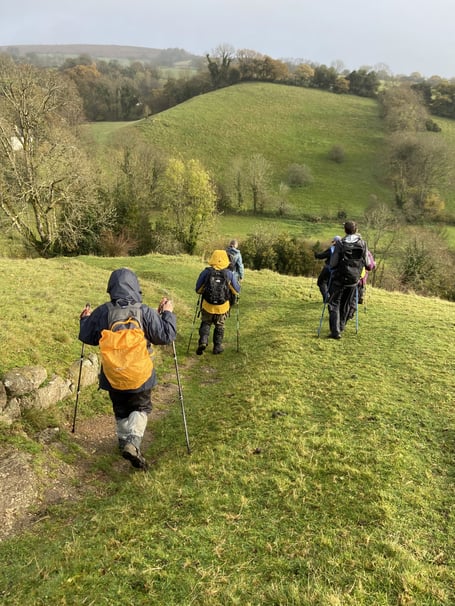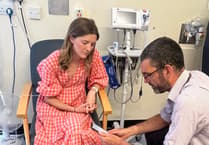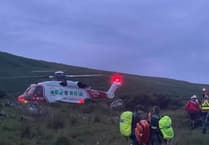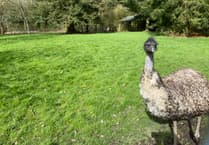Fourteen members set out from the picturesque town of Moretonhampstead, nestled in the Dartmoor National Park, 15 miles west of Exeter.
The origin of the place-name is Moor farm/settlement. From the old English mōr A marsh, barren upland. tūn An enclosure; a farmstead; a village; an estate, and hām-stede; homestead, the site of a dwelling.
The town was mentioned in the Domesday Book in 1086, then known as Mortone and owned by King William the Conqueror.
A famous son of Moretonhampstead was Lord Hambleden (1868-1928) born William Frederick Danvers Smith, only surviving son of the W.H. Smith who with his father, also W.H. Smith, founded the famous firm of newsagents.
Lord Hambleden became Lord of the Manor from 1891. Some of his better-known contributions to Moretonhampstead were the building and endowment of the Cottage Hospital in 1900 and the restoration of St Andrew’s Church.
Another well-known local character was George Parker Bidder, a 19th century engineer born in the town and renowned as a calculating prodigy
As a young boy he displayed a natural skill at calculation and his father exhibited him as a ‘Calculating Boy’,at local fairs up to the age of six and later around the county, his father earning considerable sums of money from his son’s talent.
Bidder was removed from the influence of his father and sent away to school to widen his education. Despite his father’s attempt to exhibit his son again, he was rescued and sent to Edinburgh University to further his education.
Although a relatively short walk of about 5.6 miles this week, the steady climb up Mardon Down of 160m over two miles was quite a slog for some but much of that ascent was on a sheltered woodland path scattered with beautiful autumnal leaves lit up by the occasional shaft of sunlight through the trees.
The cairn known as Giant’s Grave on Mardon Hill is not very impressive to look at being little more than a wide but shallow heap of lumpy vegetation.
Charles Spence Bate, a distinguished president of the Devonshire Association in the 19th century, refers to it as ‘nine yards round apparently undamaged before being ‘opened some years before’ 1873; in a cist of ‘six great stones’ were found ‘a spearhead of copper, two pegs or screws which fastened it to its shaft, a glass British bead and a small amulet of soft stone, calcined bones, ashes etc..’ (as quoted in www.hartstongue.co.uk ).
The wind got up as the walkers neared the summit of Mardon Down but the mist and showery rain briefly cleared revealing panoramic views from the top.
Another blustery squall soon arrived as the group gathered around the cairn circle which saw the walkers huddled in their waterproofs before hurrying down for a little more shelter. There were occasional showers for the remainder of the day but the weather improved and was generally better than anticipated.The route was a mixture of woodland paths, fields and quiet country lanes and a few tricky, wet and slippery stiles to cross along the way.
The paths were often saturated, running with water and boggy in places. Turning back towards the town, the walkers skirted Butterdon Hill, and returned via the Dartmoor Way passing through a tranquil stretch of woodland with a tropical, magical feel in places as they ducked below long threads of ivy.
Care was needed descending the steep path on ankle-turning uneven ground. The terrain made this walk plenty long enough for the walkers to feel they had earned their cuppa and cake at the end of the walk.
As ever, new walkers are always welcome. Meet at the post office in George Street, Okehampton on Sunday mornings ready to leave at 9.30am.
Please be there in plenty of time so that the group can leave promptly.
Next week the walk will start at Dunsdon. Where possible, we try to share cars though this cannot be guaranteed. You should be suitably attired for all weather conditions, including sturdy footwear and bring a packed lunch.





Comments
This article has no comments yet. Be the first to leave a comment.